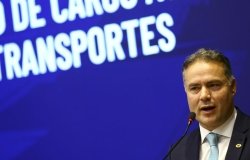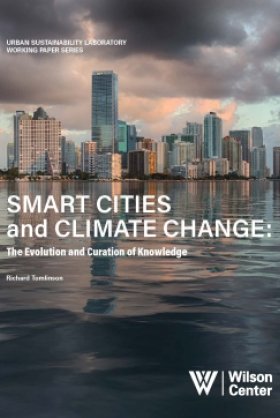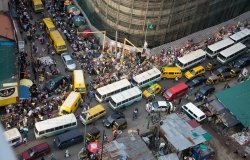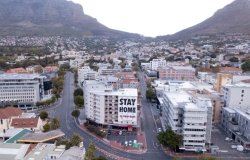Mega-Cities and the Process of Planning
Overview
Summary of a meeting with Jorge Wilheim, Secretary of Planning, City of São Paulo; Janice Perlman, President, Mega-Cities Project, Inc.; Josep Subirós, GAO, Projects and Ideas; Richard Stren, Professor, University of Toronto, and former Wilson Center Scholar; Aprodicio Laquian, Visiting Scholar, Massachusetts Institute of Technology.
Jorge Wilheim began the session with an in-depth presentation of the new Strategic Master Plan for the City of São Paulo, which is currently under review by the City Council. The Plan carefully considers both the Brazilian and global contexts within which São Paulo is situated, with particular attention paid to globalization, capital concentration, and the formation of new actors. Such an environment, Wilheim contended, necessitates a renegotiation of the social contract.
As the fourth largest city in the world, São Paulo now boasts a population of 10.4 million residents, with a total metropolitan population of almost 18 million. The challenges of the Brazilian milieu, namely extreme inequalities and a still undefined national strategy for development, complicate São Paulo's own barriers to equitable and sustainable development. The city's own barriers include a 17 percent unemployment rate, an average of 120 km of traffic jams per day, and a homicide rate of 57 per 100,000 people, a figure equivalent to that of civil war. Yet, São Paulo also boasts the largest airport in Latin America, reputable universities and medical centers, vibrant culture, fast-growing business, and an adaptable and qualified supply of manpower.
Wilheim asserted that the Strategic Master Plan was designed to capitalize on the city's two major assets: the law and the ability to plan. The plan itself centers on six leading principles: to act in solidarity towards excluded populations; to consider homes as social rights; to complete and expand roads and transportation systems; to salvage the urban environment; to transfer funds from developers to public works; and to strengthen the public sector's initiative and planning.
Commentator Janice Perlman called Wilheim's Strategic Master Plan a "tour de force," citing its conceptual coherence and ability to generate jobs and income as the central pillars. Perlman warned however that the implementation of such a "masterpiece of master plans" will be the real challenge. Through her own study of the favelas of Rio de Janeiro, Perlman conveyed the importance of breaking the intergenerational perpetuation of poverty.
Commentator Josep Subirós emphasized that the city is not just a physical conglomerate, but the space of citizenship. Thus, despite his praise for Wilheim's plan, Subirós warned that because its scope is so ambitious, Wilheim must be careful to establish tactical priorities and enable the population to quickly visualize change. Using his native Barcelona as an example, Subirós emphasized that urban development is an operation of both construction and deconstruction, and argued for the beautification of public space as a central mechanism for instilling self-esteem and pride in the urban community.
Commentator Richard Stren discussed the plan with regard to its implications for urban development in African cities and noted that the regulatory and legal structures in Africa are not prepared for such a plan. The current preoccupation in African cities is with local governance and community organizations. The African urban experience, Stren noted, therefore informs us that the political solution to local governance is a prerequisite to planning. Yet, Stren also noted that the African city is becoming much more a "city of Africa" than it has been in recent years.
The final commentator, Aprodicio Laquian, related Wilheim's plan to the many mega-cities in Asia. Laquian argued that we have entered the stage of the mega-urban region, an era in which planning for individual cities is no longer relevant. He argued that more emphasis needed to be placed on how Wilheim's plan for São Paulo related to the nearby cities of Santos or Rio de Janeiro. Laquian also noted that political realities must be considered, and cautioned that nongovernmental organizations are not immune to government or corporate manipulation.
Hosted By

Urban Sustainability Laboratory
Since 1991, the Urban Sustainability Laboratory has advanced solutions to urban challenges—such as poverty, exclusion, insecurity, and environmental degradation—by promoting evidence-based research to support sustainable, equitable and peaceful cities. Read more
Thank you for your interest in this event. Please send any feedback or questions to our Events staff.









